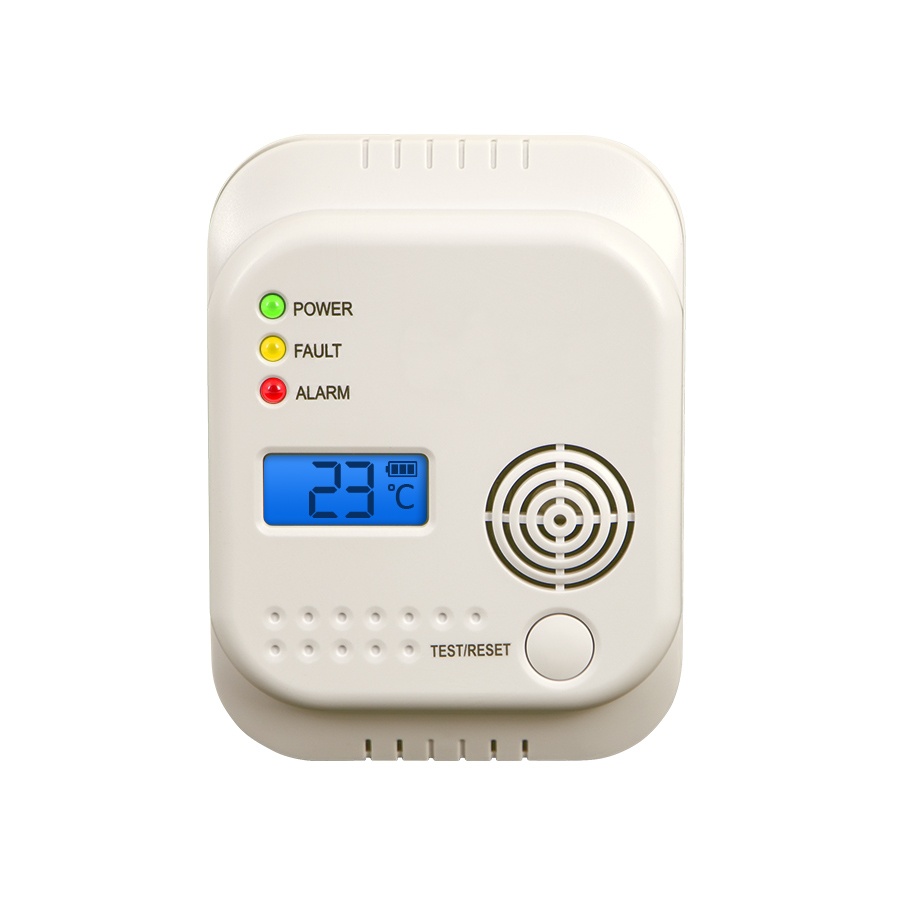
Carbon monoxide detector - what to do if it beeps?
Content
If you are going to buy a carbon monoxide detector, you should familiarize yourself with the principle of its operation. One of the most important questions concerns the correct response to an alarm. Does an audible signal always indicate danger? What should I do when I hear the sound of the device? We answer!
Why is the carbon monoxide sensor beeping?
Carbon monoxide detectors warn households of dangers caused by too high concentrations of carbon monoxide in the air. They emit a characteristic pulsating sound signal. This is an alarm clock that is very easy to recognize because it is relatively loud - depending on the model, it can reach 90 dB.
If the carbon monoxide sensor beeps like this, it signals danger. Remember that any alarm should be taken equally seriously, even if your family members think a carbon monoxide leak is out of the question. It must be borne in mind that this happens not only when using gas appliances (for example, when the stove tap is not closed), but also when they suddenly fail. There can be many reasons for this, so you need to be vigilant in such a situation.
It is also worth remembering that certain sensor models can also generate an audible signal when their batteries are about to run out. So before you start worrying about a potential leak, be sure to take a look at your device's display. If the alarm only concerns the battery, the detector will display the relevant information (for example, a flashing battery icon).
The reason why the gas sensor beeps may also lie in its functionality. If you have "multi-in-one" equipment, for example, that detects not only carbon monoxide, but also smoke, this could cause an alarm to go off. Some models even react to tobacco smoke - sometimes it is enough for a neighbor to light a cigarette in the window, and the smoke reaches the apartment, causing the sensor to react.
It should also be borne in mind that the sensor may creak due to a malfunction. If it is worn, damaged, has a power surge or some other failure, there is a risk that it will start beeping at completely random times. That is why it is extremely important to regularly check the operation of the device - the gas and smoke detector must be serviced at least once a year.
What to do if the carbon monoxide sensor beeps?
So, as you can see, the causes of carbon monoxide and smoke detector alarms can be very different. None of the beeps should be underestimated, however, and sensor screech should be taken very seriously. The threat often comes at the most unexpected moment.
However, if you are absolutely sure that there is no leakage or fire, and you suspect a sensor malfunction, contact the service center. This situation can occur especially with older ones that are already several years old, or in connection with a power surge caused, for example, by a thunderstorm (if the sensor is powered by the mains). Remember also about the already mentioned battery discharge - one lasts an average of 2 years.
What should I do if the sensor not only beeps, but also shows too high a level of carbon monoxide in the air on the display?
What to do when a carbon monoxide detector detects a threat?
If a gas and carbon monoxide detector has detected an existing threat, it is very important to remain calm. Remember that every second spent on nerves can be critical to your safety and the safety of your loved ones. So how to behave?
- Cover your mouth and nose with any cloth – limit the level of absorbed gas.
- Open windows and doors wide open - preferably in the entire apartment, and not just in the room where the sensor detected the threat. Remember that the gas spreads through the air and may have penetrated into all rooms.
- Report danger - not only all households, but also their neighbors. Remember that when you open the door to the apartment, gas will also begin to leak out, which in the case of an apartment in an apartment building will pose a threat to other residents. Moreover, in any case, there is also the risk of an explosion.
- Evacuation - take all household members out of the building, and remember about pets if you have them.
- Contact Services - call 112. The dispatcher will call both an ambulance and firefighters, so one call is enough. You do not need to call 999 (ambulance) and 998 (fire department) separately.
And if you are just about to buy a carbon monoxide detector, be sure to also read our buying guide "Carbon monoxide detector - what you need to know before buying?".
